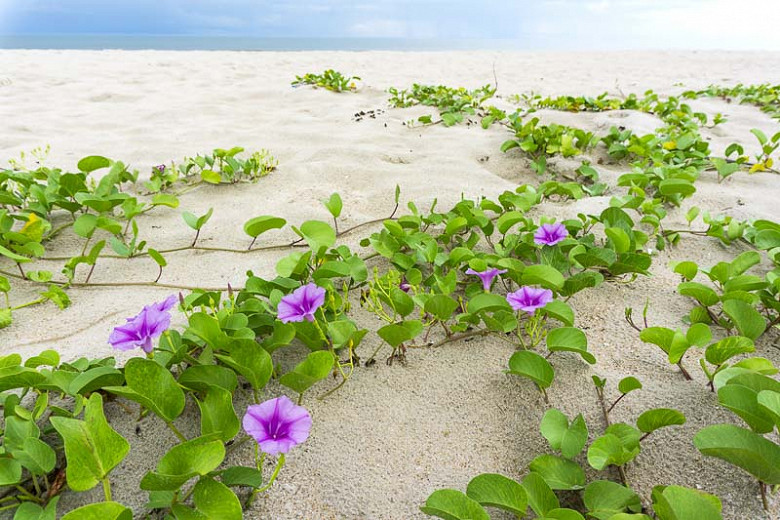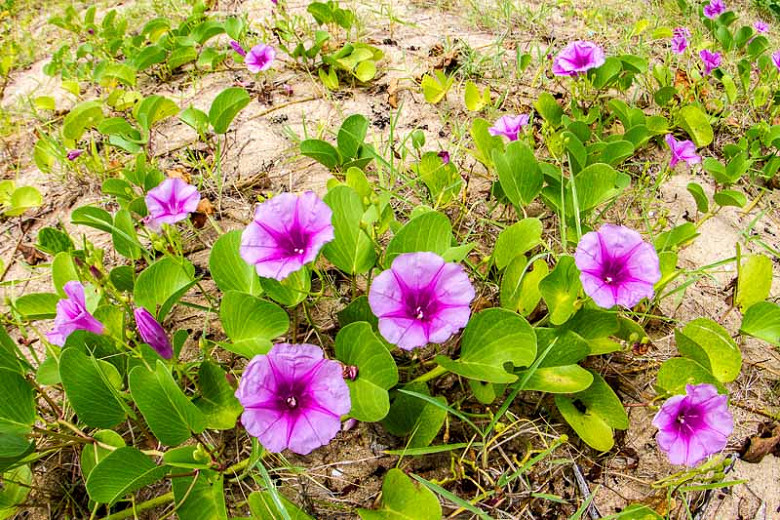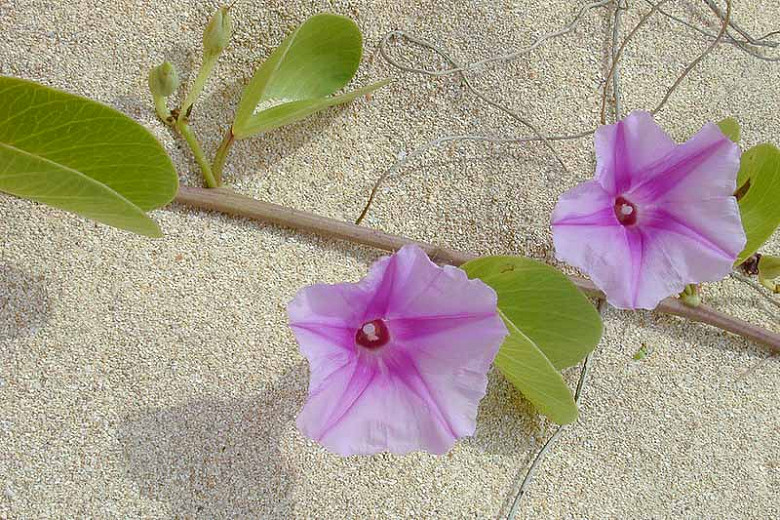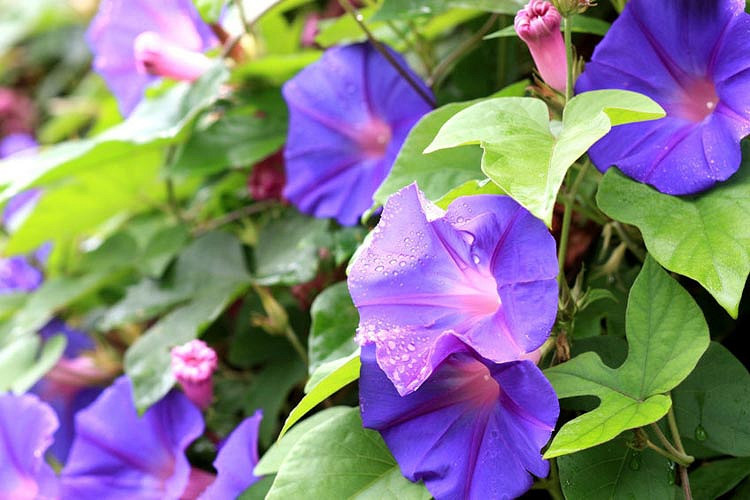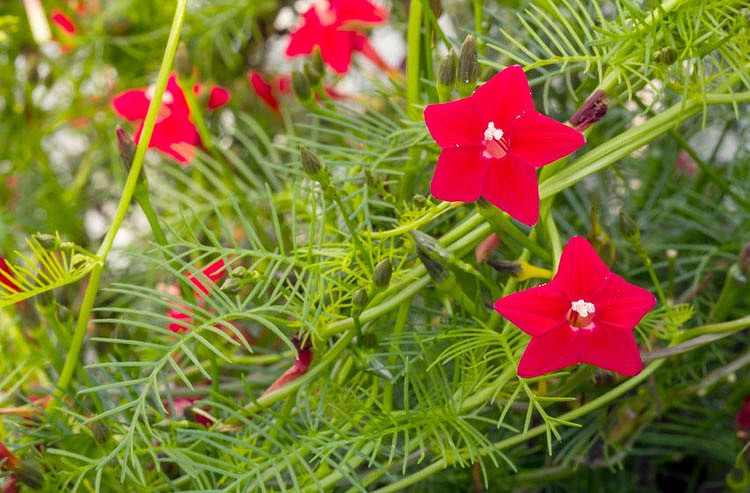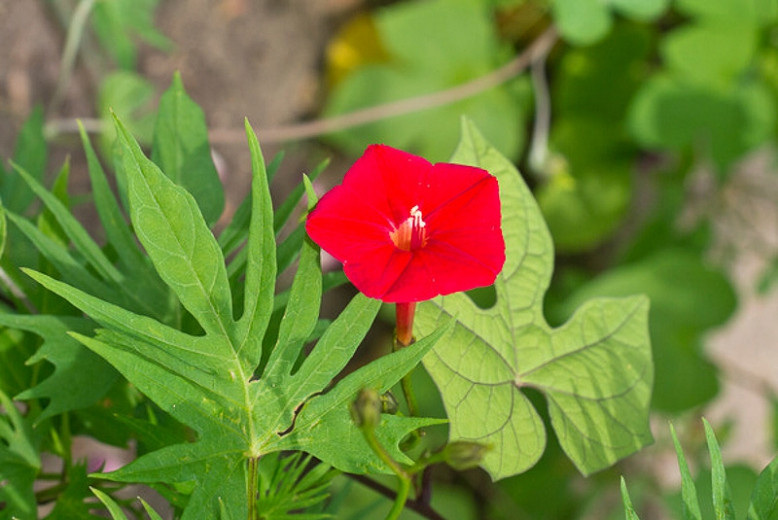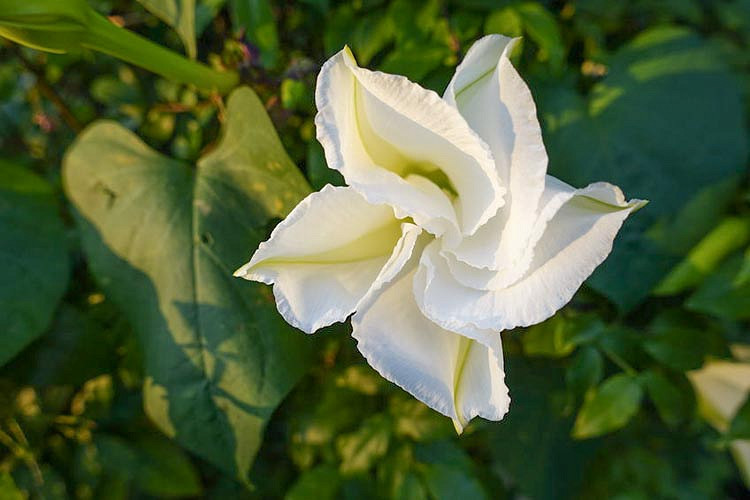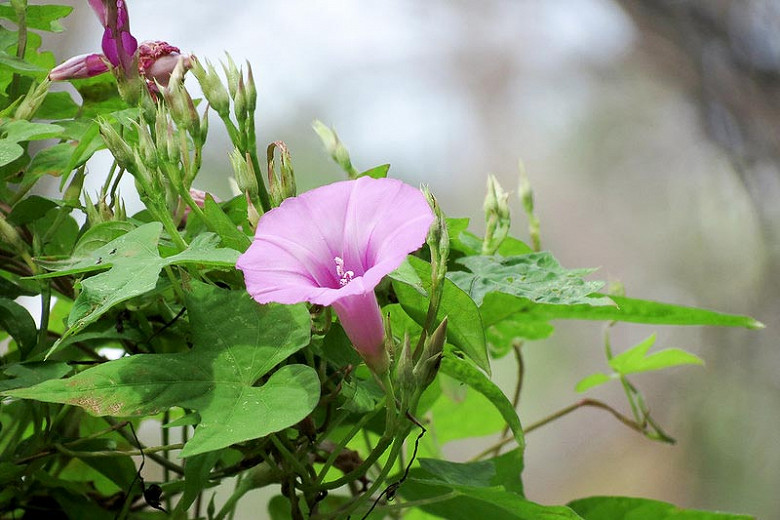Ipomoea pes-caprae (Railroad Vine)
Noted for its showy flowers and interesting foliage, Ipomoea pes-caprae (Railroad Vine) is a creeping evergreen vine with pink to lavender, reddish-purple, or violet flowers that open in the morning and begin to close up by afternoon. Blooming all year-round, with a peak from late spring to winter, the flowers are large, 2 in. across (5 cm), and funnel-shaped with fused petals, usually with a darker purple throat radiating as bands up the midline of each petal. Attractive to bees, butterflies, moths, flies, beetles, wasps, and ants, they give way to ovoid, dehiscent capsules containing seeds that are adapted for dispersal on ocean currents. The succulent trailing stems are covered with small, alternately arranged, egg-shaped to circular, dark green leaves with a notched apex. Forming roots at the nodes, they provide a dense leafy cover. One of the most widely distributed beach plants in the world, Railroad vine can be found in subtropical and tropical areas worldwide, including the West Indies, the Americas, Africa, Asia, Australia, and the Pacific Islands. It occurs naturally in coastal habitats, especially dunes and beaches where it is an important sand stabilizer and colonizer. Railroad Vine is a tap-rooted perennial vine that grows quickly. The common name "Railroad Vine" refers to its tendency to form incredibly long tracks of horizontal stems. Railroad Vine is excellent for beachfront homes and coastal landscapes. It makes a nice groundcover in informal dry gardens.
- Grows up to 6 in. tall (15 cm) and 10-50 ft. wide (3-15 m). Will quickly spread to form a mat without being invasive.
- Thrives in full sun in dry, nutrient-poor, well-drained sandy soils. Can also tolerate moist or calcareous soils. Drought tolerant, Railroad Vine can tolerate significant and ongoing amounts of salty wind and salt spray without injury.
- No serious pest or disease issues. Keep an eye out for beetles, scales, slugs, leaf spots and rust.
- Propagate by seeds.
- Native to pantropical, including Florida and tropical and subtropical Americas, Africa, Asia, Australia and the Pacific Islands.
- All parts are potentially poisonous if consumed.
- Toxic to dogs, toxic to cats, toxic to horses.
Requirements
| Hardiness | 8 – 11 |
|---|---|
| Plant Type | Climbers, Perennials |
| Plant Family | Ipomoea – Morning Glories |
| Exposure | Full Sun |
| Season of Interest | Spring (Early,Mid,Late)Summer (Early,Mid,Late)FallWinter |
| Height | 4" – 6" (10cm – 15cm) |
| Spread | 10' – 60' (3m – 18m) |
| Water Needs | Low |
| Maintenance | Low |
| Soil Type | Sand |
| Soil pH | Acid, Alkaline, Neutral |
| Soil Drainage | Well-Drained |
| Characteristics | Showy, Evergreen |
| Native Plants | Australia, United States, Northeast, Pennsylvania, Southeast, Alabama, Florida, Georgia, Louisiana, Mississippi, South Carolina, Southwest, Texas |
| Tolerance | Drought, Salt |
| Attracts | Bees, Butterflies |
| Garden Uses | Ground Covers |
| Garden Styles | Coastal Garden |
